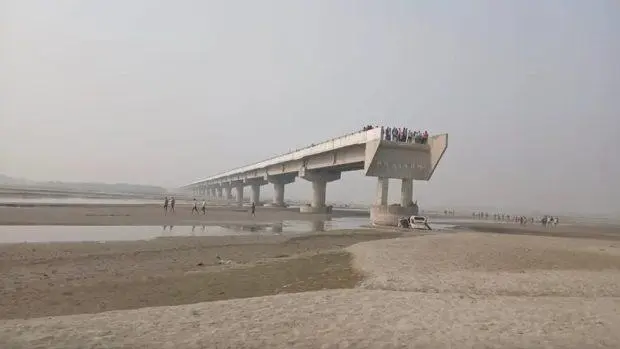Police books PWD and Google Map officials in relation to the Bareilly car crash case deaths
Budaun (UP), Nov 25 – A heartbreaking accident in Uttar Pradesh has brought attention to the intersection of technology and infrastructure oversight. Three men lost their lives when their car fell off an under-construction bridge into the Ramganga river. The driver, relying on Google Maps, was led onto an unsafe route. This incident raises critical questions about accountability and the responsibility of both public authorities and private tech companies.
Credits: Hindustan Times
The Accident That Shook a Community
The victims, Nitin and Ajit, brothers aged 30 from Farrukhabad, and Amit, 40, from Mainpuri, were traveling from Noida to Bareilly to attend a wedding. Their journey turned fatal when their car plunged from a partially built bridge on the Bareilly-Budaun border in the early hours of Sunday.
According to reports, the front portion of the bridge had collapsed earlier this year due to floods. However, there were no safety barriers, warning signs, or diversions at the site. Adding to this, the bridge’s status had not been updated on Google Maps, leading the driver to the perilous route.
Google Maps and the PWD in the Spotlight
The aftermath of the tragedy has placed the spotlight on both the Public Works Department (PWD) and Google Maps. Dataganj Police Station SHO Gaurav Bishnoi confirmed that an FIR has been registered against four PWD engineers for alleged negligence. Unnamed individuals are also under investigation for failing to ensure safety measures at the site.
For the first time in such cases, a regional officer of Google Maps has been included in the scope of the inquiry. While his name is yet to be added to the FIR, this development highlights the evolving accountability framework for tech companies in public safety incidents.
Google’s Response: “Our Deepest Sympathies”
In response to the incident, a Google spokesperson issued a statement, expressing condolences and pledging cooperation with the authorities in the investigation. The statement read, “Our deepest sympathies go out to the families. We’re working closely with the authorities and providing our support to investigate the issue.”
This tragedy underscores a critical flaw in navigation systems: the reliance on user-generated data and delayed updates for dynamic situations like floods or road collapses.
The Infrastructure Oversight
Local authorities admitted that the bridge had been damaged for months, but no significant measures were taken to prevent access to the site. Ashutosh Shivam, Faridpur Circle Officer, revealed, “Earlier this year, floods caused the front portion of the bridge to collapse onto the river, but this change had not been updated in the system.”
The lack of physical barriers, signage, and timely road updates contributed significantly to the accident. This negligence on the part of the PWD, coupled with outdated information on Google Maps, created a recipe for disaster.

Credits: India TV News
The Larger Debate: Tech Meets Public Responsibility
This incident raises a pressing question: Who bears the responsibility when technology leads users into unsafe territory? Navigation apps like Google Maps are indispensable tools for millions, yet they depend on accurate, real-time data often sourced from authorities or user feedback.
Experts argue that while technology companies must improve their systems, the onus also lies with local bodies to ensure infrastructure safety. Barriers, warning signs, and regular maintenance are essential to prevent such tragedies.
A Call for Change
The Budaun tragedy serves as a grim reminder of the cost of negligence in infrastructure and technology. Authorities must work towards creating a safer ecosystem where human lives are prioritized over bureaucratic delays.
For Tech Companies: Incorporate AI-driven updates to reflect dynamic changes like road closures or disasters in real time.
For Authorities: Enforce stringent measures to mark unsafe areas, ensuring no gaps in safety protocols.
For Drivers: Exercise caution, especially in remote or less-maintained areas, and verify routes with locals when possible.
Conclusion: A Joint Responsibility
As investigations continue, the tragedy highlights the urgent need for synergy between public infrastructure management and private tech companies. Human lives depend on it. For the families of Nitin, Ajit, and Amit, justice will lie not just in identifying accountability but in ensuring that no one else faces such a tragic fate.
Let this serve as a wake-up call for better vigilance, smarter technology, and safer infrastructure.


Comments are closed.